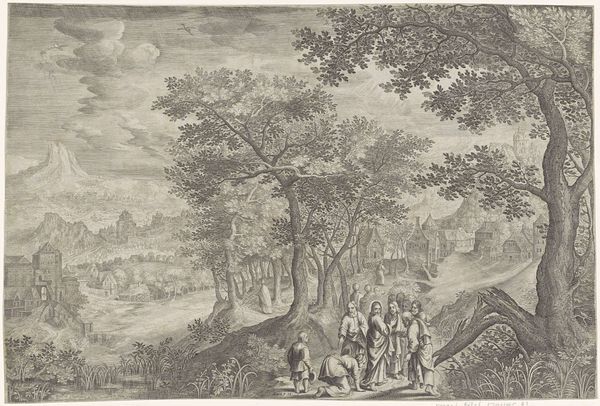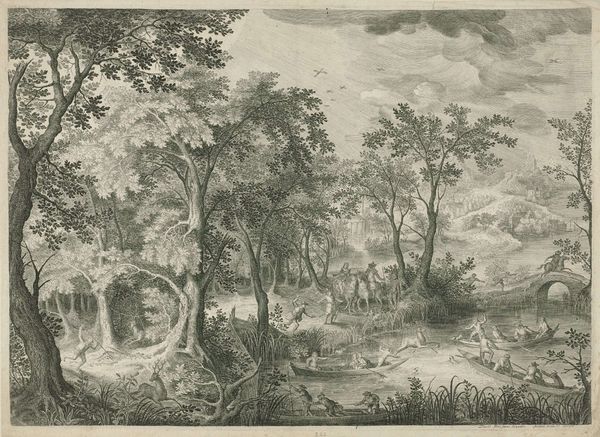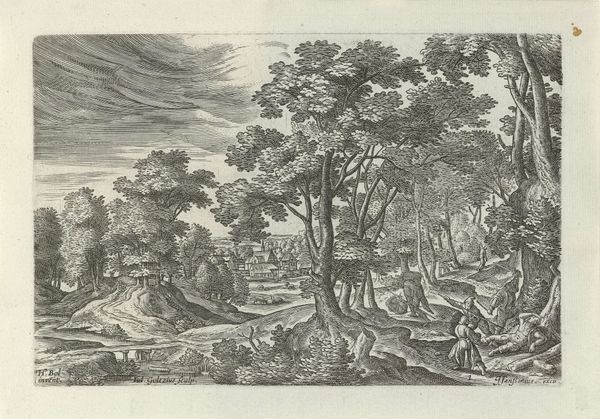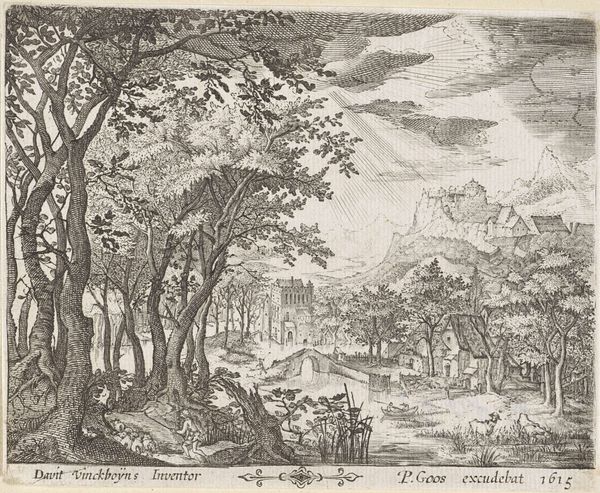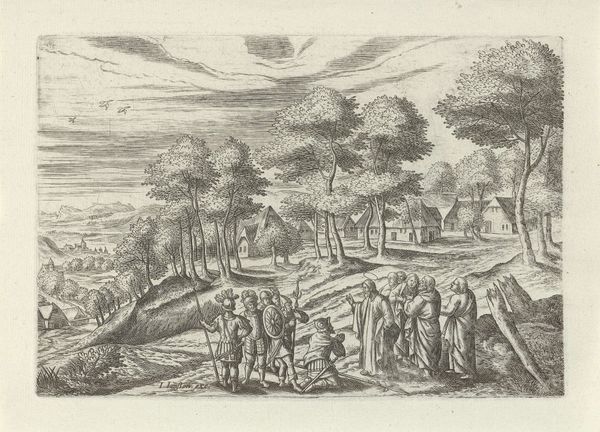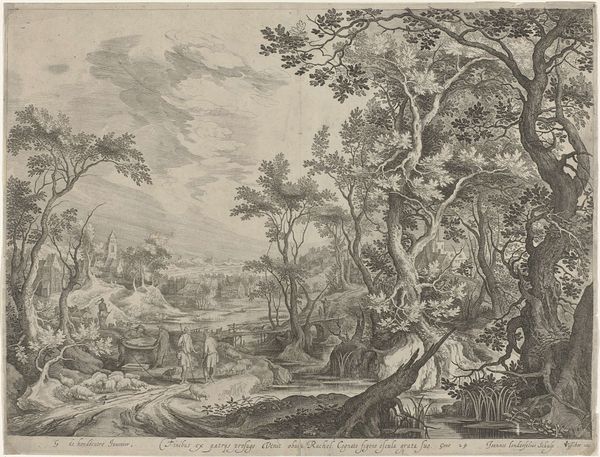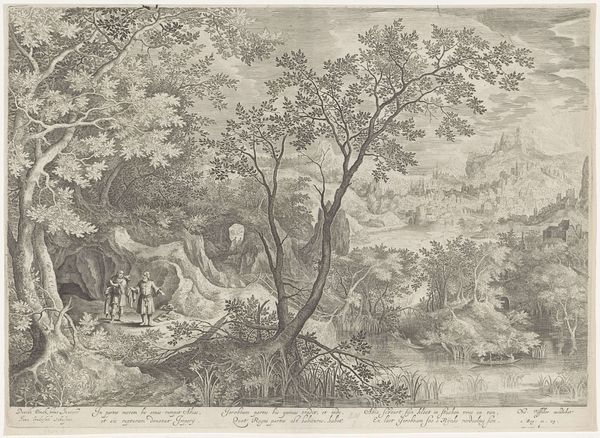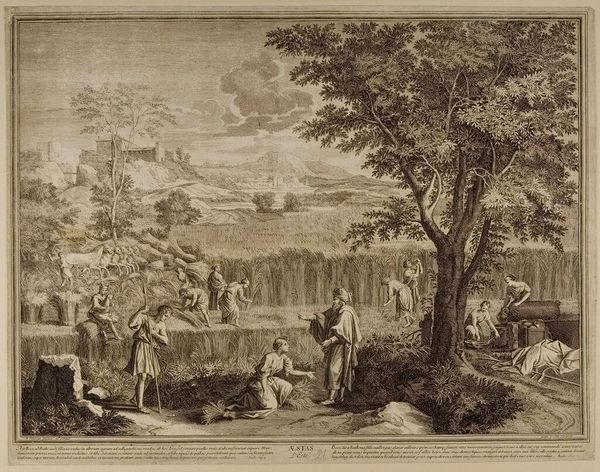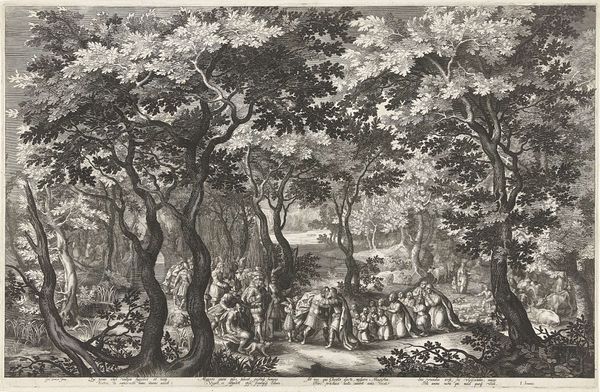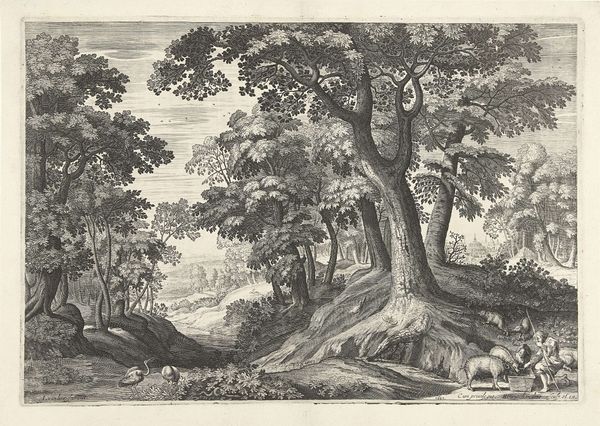
etching
#
medieval
#
etching
#
landscape
#
etching
#
figuration
Dimensions: height 349 mm, width 480 mm
Copyright: Rijks Museum: Open Domain
Jan van Londerseel created this print, “Landschap met Christus en de discipelen in het korenveld,” or “Landscape with Christ and the Disciples in the Cornfield,” sometime around 1600, using engraving. The scene blends a biblical narrative with the everyday reality of the early modern Netherlands. Christ and his disciples are shown walking through a cornfield, an episode from the Gospels, yet the landscape around them is distinctly Northern European. The architecture in the distance and the style of dress worn by the figures place the scene firmly in the artist’s contemporary world. Londerseel was part of a vibrant artistic community, and his prints reflect a society grappling with religious and social change. The choice to depict biblical figures in a local setting was part of a broader movement to make religious stories more accessible and relevant to ordinary people. Prints like this one would have circulated widely, serving as both devotional objects and reflections on the changing world around them. To understand this work fully, historians consult a range of resources, from period religious texts to economic surveys, piecing together the complex web of influences that shaped its creation. The meaning of art is always contingent on social and institutional context.
Comments
No comments
Be the first to comment and join the conversation on the ultimate creative platform.
